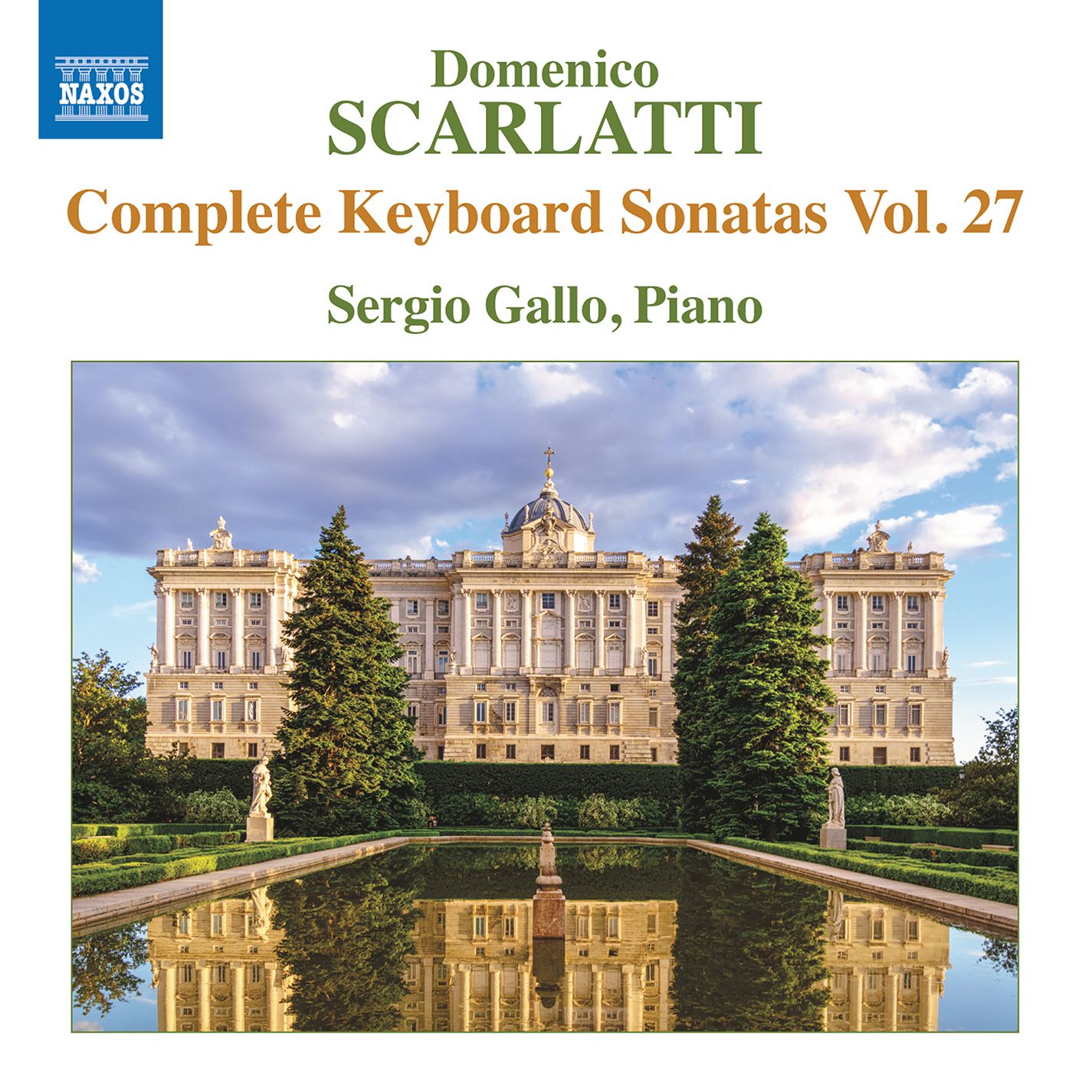Superb Scarlatti from Sergio Gallo on Naxos
A fascinating release - fine playing by Sergio Gallo

Domenico Scarlatti on the piano: the bread and butter of many an amateur pianist, yet sometimes frowned upon by purists. Yet the likes odf Mituko uchida (who has beenknwon to encore a Scarlarri Sonata, always presented with exquisite refinement) and Lucas Debargue (see our post A Cornucopia of Scarlatti) have proved the joys at top-drawer professional level are legion.
Naxios, of course, is working its wy through the complete Sonatas, and is at Volume 27, with the fabulous Sergio Gallo (a Steinway artist) as pianist here, we have some early “Essercizi” (Kk. 12 and 15), an emphasis on dance forms from Spain and Purtugal, and a World Premiere recording of the Sonata (Fuga) in DMinor, Kk 96.
[30 of Scarlatti’s sonatas were publshes as “Essercizi” in London around 1738, hence the alternative title.]
Let’s start with the virtuoso Sonata in G-Minor, Kk. 12 and the beutifully articulated textures of the E-Minor, Kk 15:
There may be over 550 Sonatas by Scarlatti, but each inhabits its own world. Try the miraculous counterpoint of the Menuet, Kk 42 (B flat):
and contrast it with Gallo’s supremely even delivery of the inner workings of Kk 48 (a piece that includes hand-crossing, a technique typical of this composer):
Gallo treads the line of using the resources of a modern piano and honouring Scarlatti's style perfectly, something very evident in this last example. He uses dynamic contrast well, terracing phrases, as in the F-Major, Kk 59 (some lovely articulation in tehe right-hand ascents here, too):
There is a rather nice deliiting gestire in Kk 76 (G-Minor) - at the end of each half, a descending scale, dismissive, almost in the nature of someting one might find in a Fantasia (think Beethoven's Op. 77):
Some might find Gallo's C-Major, Kk 58 a little too Romantic, too pedalled and overly reflective. A little reticence would have maintained the interior character and ensured contrast with the G-Minor that folows (Kk 88) - which does benefit from such an expressive approach:
This Sonata (the G-Minor) acts as something of an oasis - it is over nine minutes long (which is a lot in Scarlatti-land).
I haven't counted, but I imagine not many Scarlatti Sonatas are in A flat. Kk 130 is, though, an eminently charming piece:
One interesting aspect of the programming here is the juxtaposition of two sonatas in the same key. The interior, reflective Kk 144 sits in high contrast with the brilliance of Kk 152:
Perhaps the most delightful, both as a piece and in performance, is the Sonata in B flat, Kk 189. As the booklet notes put it, humour is paramount:
A am not sure Gallo nails the charm of Kk 159 (B flat), but it is indeed fabulous to have a first recording here, the Sonata (Fuga) in D-Minor. Kirkpatrick thought this might be spurious, but it is a fascinating piece. Curiously, the next work, the Sonata in G-Minor, “Come il pare, e piace,” is strcter in terms of counterpoint. Both receive fine performances:
Finally, the disputed Raccolla musicale di sonate per cembalo solo, a terrific piece, scampering away, whoever wrote it:
A fascinating release - fine playing by Sergio Gallo.
